Mission Phases
The Artemis Program will be completed in different stages that aim to ensure a safe human landing on the Moon:
Artemis I
Artemis I was the first integrated flight test of an uncrewed Orion spacecraft atop the Space Launch System (SLS) rocket. This stage of the mission tested Orion’s ability to operate beyond low Earth orbit; it also tested deep space navigation and communication systems. SLS sent Orion to a stable orbit beyond the Moon. From that orbit, Orion returned to Earth and demonstrated its ability to reenter and land.
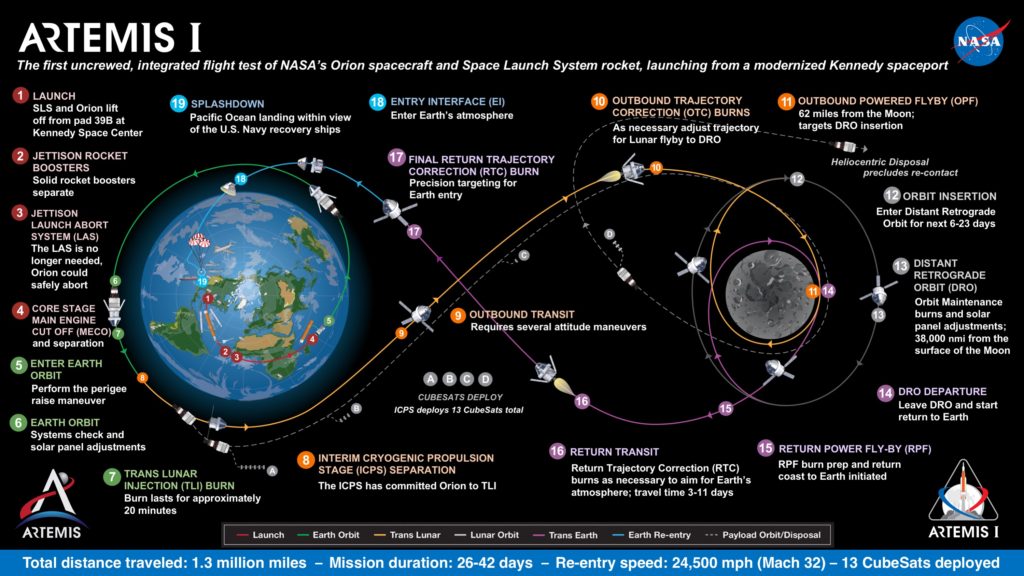 Artemis I Mission. Credit: NASA
Artemis I Mission. Credit: NASA
Thirteen secondary payloads will also come to the Moon on Artemis I. The payloads include small satellites that will study the lunar surface, measure magnetic fields in space, and assess the impact of space radiation. These satellites will launch in Orion’s stage adapter. Another four payloads will fly on Artemis I inside the Orion crew module, including a vest that could help astronauts avoid harmful space radiation in future deep space missions.
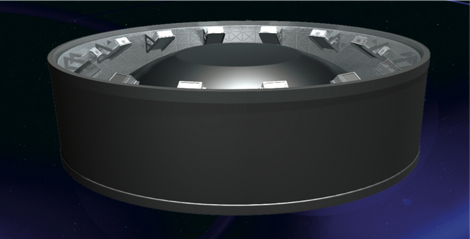
Artist concept of the Orion stage adapter with secondary payloads and avionics box to control payload deployment. Credit: NASA
Artemis II
This mission is crewed and tests Orion’s life support systems with four astronauts aboard. Artemis II will demonstrate critical functions including mission planning, system performance, crew interfaces, and navigation and guidance beyond low Earth orbit. After launching, SLS will orbit the Earth twice, firing its engines to build up the speed to push it to the Moon. Artemis II will be a lunar flyby and not yet a touchdown on the lunar surface. The entire mission will last approximately 21 days.
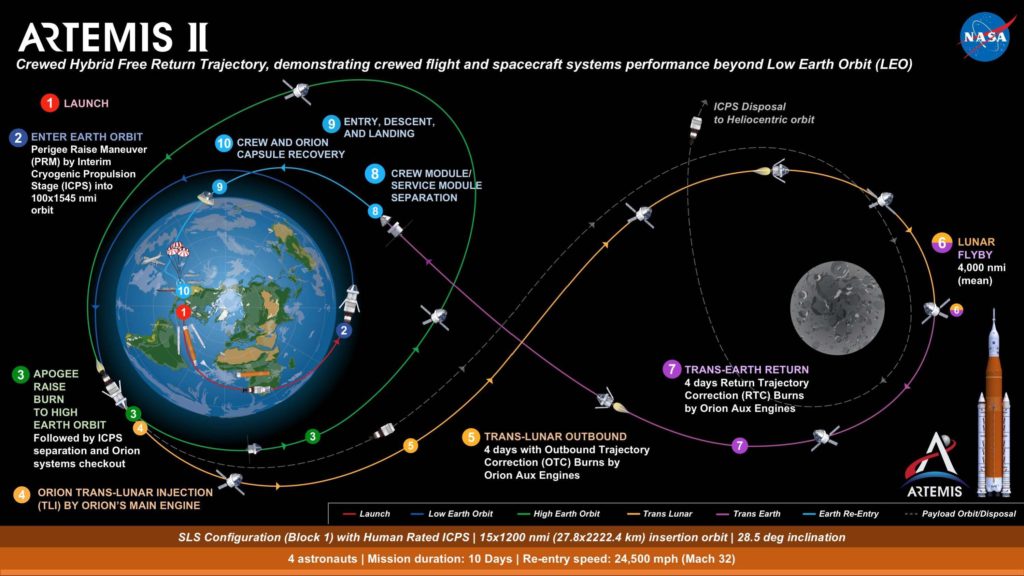
Artemis II Mission. Credit: NASA
Artemis III
Artemis III is the second crewed mission of the program, and the first to land astronauts on the Moon. The crew will visit the Moon’s south pole to search for water, study its surface, test technologies, and learn to work on a world outside Earth.
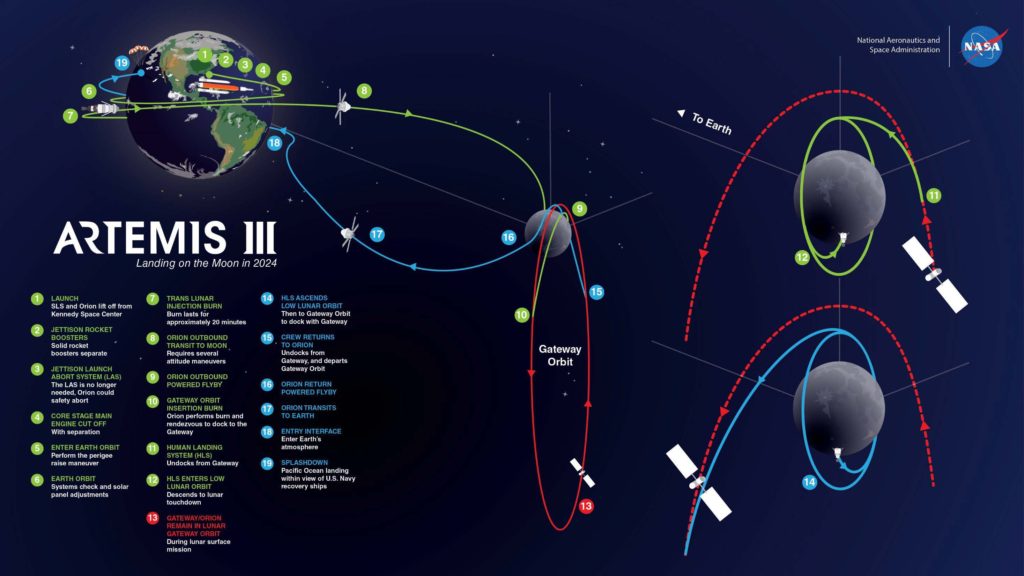
Artemis III Mission. Credit: NASA
Artemis IV
Artemis IV is the third crewed mission of the program, and is designated to deliver International Habitation Module to Gateway, followed by Crewed Lunar Landing. Two astronauts will descend to lunar surface to conduct a week-long mission, while two other astronauts will tend the Gateway.
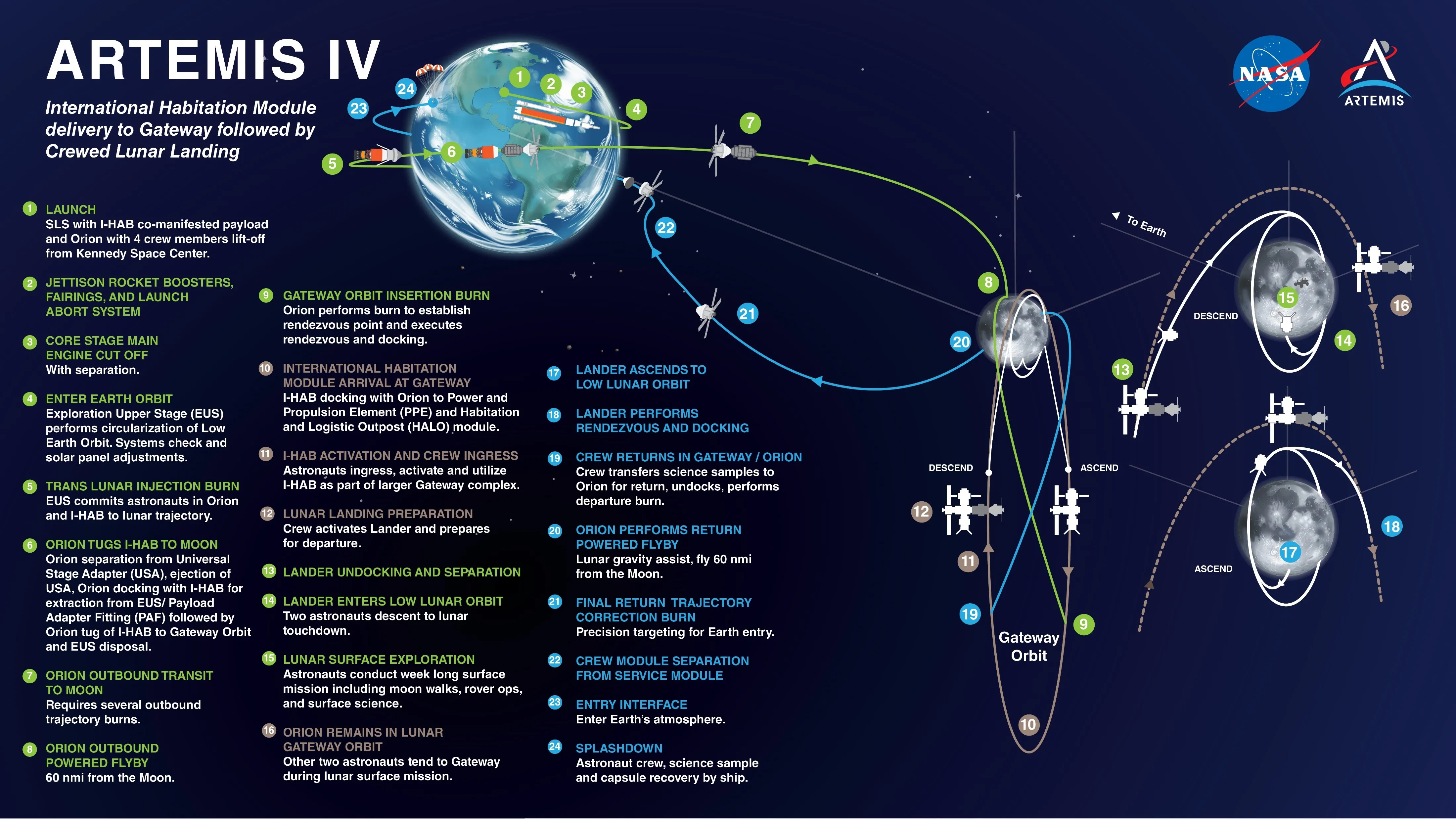
Artemis IV Mission. Credit: NASA
Link to Nasa ARTEMIS page.
